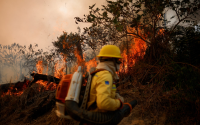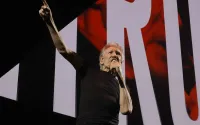The idea that Britain could be involved in nuclear war with Iraq seems fantastic and is unlikely. Nevertheless, the British prime minister and the US president's stated reason for the possible invasion of Iraq would be, as George Bush has put it, to deal with the problem of the "worst leaders with the worst weapons". The director of the CIA, George Tenet, told the US Congress that Saddam would be likely to use any biological, chemical or nuclear weapons he had in response to an invasion.
But what is the official policy on using the west's nuclear weapons, what weapons might be used and how might they be used? Last month the US published a new National Strategy to Combat Weapons of Mass Destruction. It states that: "The United States will continue to make clear that it reserves the right to respond with overwhelming force - including through resort to all of our options - to the use of WMD against the United States, our forces abroad, and friends and allies." These options include "nuclear and conventional forces". "US military forces and appropriate civilian agencies must have the capability to defend against WMD-armed adversaries, including in appropriate cases through pre-emptive measures. This requires capabilities to detect and destroy an adversary's WMD assets before they can be used." Britain's minister of defence, Geoff Hoon, has explained a similar strategy in parliament and in interviews.
Another policy statement from the Bush administration discussed the military need for nuclear weapons in these situations: "Nuclear weapons could be employed against targets able to withstand non-nuclear attack (for example, deep underground bunkers or bio-weapons facilities)."
Although President Bush has attracted criticism for these ideas, it was Bill Clinton who introduced them into US military training manuals and built and fielded a special nuclear bomb to attack this type of target. The US military's manual for Theater Nuclear Operations issued in the mid-1990s even included "non-state actors", ie terrorists, in a list of "likely targets". The bomb built by President Clinton is called the B-61 Modification 11. Bomb 61/11 has a hardened casing that enables it to burrow into the ground after it hits the earth before it explodes. This enables it to have more effect on deep bunkers than a surface explosion. Its power can be as small as 340 tons of TNT, just 3% of the size of the Hiroshima bomb. Bomb 61/11 can be carried to its target in several types of warplane, including the B-52 and fighter jets like the F-15 Eagles based in Suffolk.
For government officials with the job of planning nuclear warfare, a small nuclear bomb dropped from a warplane has significant advantages. A bomb dropped from a plane is controlled by the pilot until the last moment.This is more reliable than a missile which might land off-target, even in the wrong country. This is why there is less consideration of using the thousands of other nuclear weapons that the US (and Russia) still keep ready at a few minutes notice. Missiles used to have the advantage that they could not be shot down, but today there is little effective threat to US planes from anti-aircraft weapons.
Any use of nuclear weapons would have enormous political impact and would have to show clearly that a greater harm was being prevented. The US considered using nuclear weapons in the war with Iraq in 1991. In his memoirs, Colin Powell, now the US secretary of state and then its most senior general, describes how he was first requested and then ordered to make contingency plans by Dick Cheney, then defence secretary and now vice-president. Powell records that he could find no use for nuclear weapons that would not make matters worse; Cheney's views are not known.
If the US decided to go nuclear, it might well want to have the political cover of allied support. Indeed, based on its stated positions, the Labour government might well wish to be included. This might be achieved by the planes being flown from the British island of Diego Garcia or from bases in England.
· WMD stands for weapons of mass destruction. They are nuclear, biological and chemical weapons. The use of this term to describe all three types of weapons is recent and controversial. Nato still uses the "nuclear, biological, chemical" description as they each have very different effects. Only nuclear weapons blow things up and poison people. The other two weapons kill with poison and disease. The creation of blanket acronym WMD blurs these distinctions. The blurring conceals the fact that while major powers have hundreds and, in the case of the US and Russia, thousands of nuclear weapons and no active biological or chemical arms, the "axis of evil" and other "rogue states" may have a few of these weapons.
Proliferation means growth or spread. The word is used to define the problem of NBC weapons as more countries acquire them. Other words that describe the problem of managing weapons that exist already, "arms control", and the process of eliminating them altogether, "disarmament", are now rarely used. The US Republican party abolished the Arms Control and Disarmament Agency and President Clinton created a new military office of counter-proliferation in the Pentagon. So is it more useful to talk about the weapons of mass destruction proliferation or nuclear, biological and chemical disarmament?
Dan Plesch is a senior research fellow at the Royal United Services Institute. Nuclear policy and proliferation will be discussed tomorrow at Whitehall Security Seminar organised by the Guardian, the Royal United Services Institute for Defence Studies and the US Physicians for Social Responsibility. For tickets email www.rusi.org/events [email protected]






